Aviation against tanks (part of 18)
In 1967, the US military, not quite satisfied with light Hughes ON-6A Cayuse, announced a new competition for a promising reconnaissance and surveillance helicopter. According to the specified requirements, a new rotary-winged machine designed to monitor the battlefield and adjust artillery fire from a height of 2000-2500 m, should have a static ceiling of at least 3500 m, time spent in the air for at least 2,5 hours and more on 100-150 kg load capacity compared to the "Keyus". Maximum flight speed - at least 220 km / h. In comparison with the transport and combat UH-1, the reconnaissance vehicle should have less visual and acoustic visibility. The possibility of quick preparation for re-departure in field conditions and more roomy passenger-cargo compartment compared to the OH-6А, which would give the opportunity to participate in search and rescue operations, the evacuation of the wounded and the delivery of small cargoes, was specifically mentioned.
In 1968, the winner of the competition was announced a specially prepared version of the light civil helicopter Bell 206A, created by Bell Helicopter Textron. After adopting it, he received the designation OH-58A Kiowa. Compared to the civilian version of the "Kiowa" got a more powerful turboshaft engine Allison T63-A-700 with power 317 hp and a new bearing screw with wide blades. A helicopter with a crew of two people with a maximum take-off weight of 1370 kg could cover a distance of 480 km. The payload did not initially exceed 450 kg. Considering that the new machine was to operate near the line of combat contact, the helicopter provided for the installation of 70-mm NAR units, a six-barreled 7,62-mm machine gun M134 Minigun or 40-mm automatic grenade launcher M129. However, in most cases, due to a noticeable drop in flight data during weapon installation, reconnaissance was carried out on an unarmed helicopter, or the armament was limited to one machine gun.
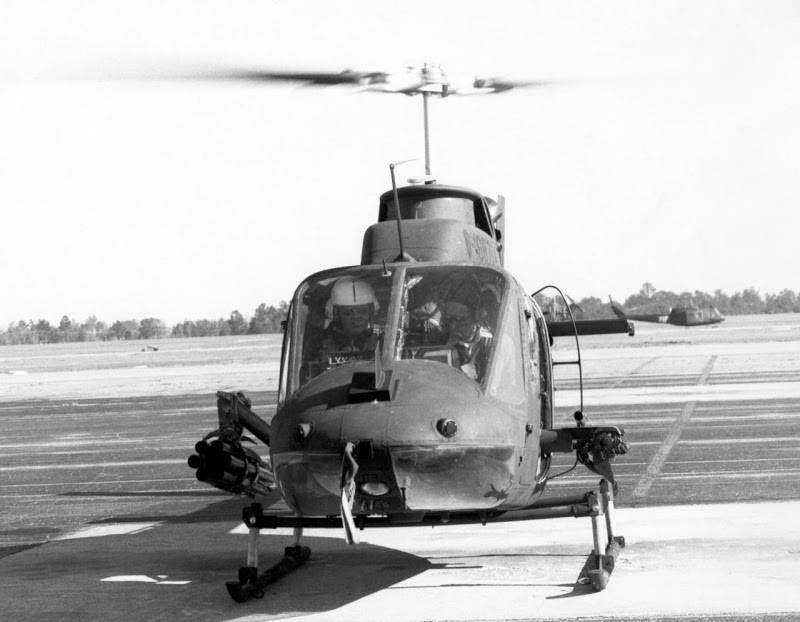
In August 1969, the cars of the first production batch were shipped to Vietnam. There they were used in parallel with the "flying egg" OH-6A. Kayove did not succeed in squeezing the compact and maneuverable Keyus out of reconnaissance and observation squadrons, which was largely due to the weakness of the power plant. Pilots noted that the OH-58A, when fully loaded, did not have enough thrust-to-weight ratio, which in turn affected the maneuverability and speed of flight. Compared to Keijus, the slightly larger Kiowa turned out to be more sluggish in management. Thus, both light helicopters were operated in parallel in the army.
It took several months to master the machine by the flight and technical staff and the elimination of defects. The first OH-58 was lost in Vietnam in March 27 1970. During the adjustment of artillery fire, the helicopter received numerous hits of 12,7-mm bullets, which led to a loss of control as a result of the failure of the hydraulic system. Uncontrolled helicopter crashed into the jungle in the neutral zone, both crew members were killed. All in all, in Vietnam, the 45 helicopters of the "Kiowa" were lost. Some of them died in accidents and disasters caused by equipment failure and piloting errors, but more than half is the result of shelling from the ground. The loss of OH-6А amounted to the 654 helicopter, but the “Keyus” was used in South-East Asia much more.
Thus, as well as OH-6А, which he had to change, the OH-58А helicopter was very vulnerable even to light rifle weapons. The range of application of the Kayova in Southeast Asia was quite wide - two-seater light helicopters were used not only as scouts, they participated in search and rescue operations for downed American pilots, fought sampans on the rivers, patrolled the perimeter of American bases. Although the OH-58A in Vietnam did not carry specialized anti-tank weapons, in some cases reconnaissance and patrol helicopters managed to detect North Vietnamese Tanks and point them at anti-tank helicopters and fighter-bombers. In order to mark the target, phosphor grenades and flares were used. However, due to the lack of thrust, pilots avoided flying in the mountains.
According to the results of the combat use of OH-58A in Southeast Asia, it was recognized that the helicopter is in need of modernization. Also, the military came to the conclusion that in order to reduce the level of combat losses, it is necessary to move on to flights at extremely low altitude. In 1978, the OH-58 variant decided to remake the 275 helicopters built earlier. The rate of climb, speed and safety of flight were improved by the use of a more reliable Allison 63А-720 engine with an 420 horsepower. Helicopters operated by reconnaissance squadrons received a system for shooting heat traps and dipole reflectors. To reduce glare from the sun cabin equipped with flat glass. Since more attention was paid to low-altitude flights, the "knives-dividers" were installed on the upgraded machines, making it possible in 90% of cases to avoid an accident in a collision with wires.
The NVG night vision equipment and the AN / APR-39 radio reconnaissance station, which notifies the crew of the radar exposure, was introduced into the avionics avionics. Due to the increased payload, the OH-58С suspension of the 70-mm NAR and 12,7-mm M296 machine guns has appeared. Like modernized modifications of the Keyus, the Kiowa helicopters with engines of increased power were popular in special operations forces.
Due to the small dimensions of the "Kayova" in the military transport aircraft C-130 holds two OH-58С, which allows you to quickly transfer them to the place of the special operation. After unloading, the alert time is only 10 minutes.
At the beginning of 80-x, as part of the AHIP battlefield surveillance program, work began on equipping the OH-58 with new optoelectronic systems that allow reconnaissance and target designation to other helicopter gunships, hovering behind cover (hills, houses, trees), putting over them only a sensor box located above the main rotor hub. In this case, it was envisaged that the helicopter would operate, including at night, at an altitude of 15-20 m. To protect against air defense weapons, the helicopter had to carry jam stations. In general, the modernization program "Kayovy" was started in connection with the qualitative strengthening of the Soviet army air defense. Conducting visual intelligence in the zone of action of mobile anti-aircraft complexes has become a deadly thing. In addition, the experience of using helicopters armed with guided anti-tank missiles in local wars revealed certain difficulties in detecting targets. Even knowing the location of enemy armored vehicles and finding tanks visually, it was sometimes very difficult for the weapon operator to drive a target into the field of the sight of the ATGM guidance equipment. During the search and guidance missiles any abrupt maneuvers were contraindicated, as this could lead to a breakdown of the guidance process. At the same time, hovering around on a 40-60 from a helicopter was an easy target. Thus, an upgraded reconnaissance helicopter with a supra-sleeve optoelectronic system should have reduced the target search time for the helicopter of the attack helicopter by issuing accurate target designation using a laser rangefinder target designator and reducing vulnerability by reducing the time spent in the affected area of military anti-aircraft systems.
To compensate for the increased take-off weight, a new Allison 58-С250X engine with an 30 hp power was installed on the helicopter, designated OH-485D Kiowa Warrior. At Kiowa Warrior, a new four-blade propeller of increased efficiency was introduced, which was a departure from Bell’s signature handwriting, a two-bladed screw. The propeller blades withstand lumbago 23-mm projectiles. Much attention has been paid to reducing noise and thermal conspicuity. For this, the engine compartment has been increased, and the exhaust gas cooling system is located under its hoods.
The most noticeable external difference from other modifications was the “ball” of the “mast observation system”, mounted on a bar with a length of 850 mm over the rotor of the main rotor. In a round composite container, on a stabilized platform are placed: a camera with 12-fold increase, a passive infrared night vision system (thermal imager) and a laser rangefinder-pointer. The obtained information, after being processed by the onboard computer complex, is displayed on multifunctional displays. To communicate with the crews of anti-tank helicopters, the multichannel HF-VHF radio station was part of the avionics. The electronic equipment occupied the entire cargo-passenger compartment behind the backs of the two crew members, access to the equipment and its cooling system was carried out through the rear doors, which became, rather, the side hoods. In the cockpit to improve the survival of the crew when the helicopter struck the ground, they installed shock absorbing seats and airbags similar to those of the car.
Although initially for the OH-58D self-defense it was planned to hang a pair of launch tubes with FIM-92 Stinger MANPADS on a helicopter, the intelligence officer should be able to independently "process" the detected ground target. The structure of weapons introduced suspension containers with machine guns and blocks NAR, and in the cockpit mounted sights for the NAR and machine gun. The weight of the combat load on the external nodes could reach 227 kg. After the start of entering the armed forces of the OH-58D, the remaining vehicles of the OH-58С modification were disarmed and in the troops they were called "smooth".
Increased up to 2500 kg maximum take-off weight and increased frontal resistance could not be fully compensated by increasing the power of the power plant. The maximum speed of the first option "Kayova Warrior" did not exceed 222 km / h. Subsequently, on a modified OH-58D modification, the Rolls-Royce T703-AD-700A engine was introduced with a take-off power of the 650 hp. The maximum speed increased to 240 km / h.
Deliveries of OH-58D Kiowa Warrior to the troops began in the summer of 1986. A total of 349 helicopters were ordered. Later, about two hundred more remade from the early versions of the OH-58. The total cost of the helicopter's program of reconnaissance and target designation turned out to be quite impressive - $ 2,4 billion in prices of the middle 80-x. In this case, the machines of different series could seriously differ in the composition of the avionics and weapons. On the OH-58D part, a fire control system was added to the avionics, including a display and an ATGM guidance subsystem. Radar exposure warning equipment was quite perfect. The AN / APR-39 station was replaced with the "three-dimensional" AN / APR-44, which, in addition to the azimuth, indicates from where (from above or below) the source of radar exposure acts, which allows the crew to choose the correct evasion maneuver. The radar detection equipment was supplemented with an AVR-2 laser radiation warning system. Behind the engine appeared the emitter of the IR-interference station ALQ-144, similar in its operating principle to our “Lipa”.
The first OH-58D with a supra-sleeve optoelectronic system passed military trials in the US Army Specialty 160 Aviation Regiment. Later on, the Kiowa Warrior was attached to helicopter units armed with AH-64А Apache anti-tank helicopters. Intelligence OH-58D in the course of combat interaction with the shock AN-64A carried out the search and detection of armored vehicles and made target designation. If necessary, there was the possibility of "highlighting" the object with a laser beam for targeting guided missiles launched by Apache. As a rule, one OH-58D operated with 4 attack helicopters. During the operation of the upgraded reconnaissance helicopters, it was revealed that it is sometimes more rational to strike the detected target independently. For this, we had to modify the weapon control system and suspension units.
The helicopter, known as AN-58D, could carry up to 4 ATGM AGM-114 Hellfire with a laser seeker. This modification was created within the framework of the concept of “armed intelligence”, but it was not widely adopted. The standard version of weapons considered the suspension of two ATGM and the NAR unit. The use of NAR is related to the fact that 70-mm Hydra 70 rocket projectiles are versatile weapons that can be used both for ground and air targets. In addition, it is not rational to use costly anti-tank guided missile systems against small infantry units or single vehicles. With the help of rocket projectiles, you can also inflict a transient attack on the enemy’s air defense systems by briefly jumping out of cover in the folds of a terrain.
For the first time, OH-58D was tested in battle in 1989 during Operation Just Cause, which aimed to overthrow the Panamanian dictator Manuel Norieg. During the operation, the crews of OH-58D corrected the actions of the shock AH-64A and ground units. One helicopter was damaged by small arms fire, after which it crashed. The pilot managed to survive, but the operator died. Since July, 1988 of the year and a half dozen helicopters of the "Kiowa Warrior" have been involved in operations against Iranian speedboats that have attacked tankers in the Persian Gulf. It turned out that the Hellfire ATGM is ineffective against small-scale naval targets. It turned out that it was very difficult to hold a boat at a speed of more than 60 km / h in the sight, besides, the beam of the laser range finder-target designator was often scattered by splashing water.
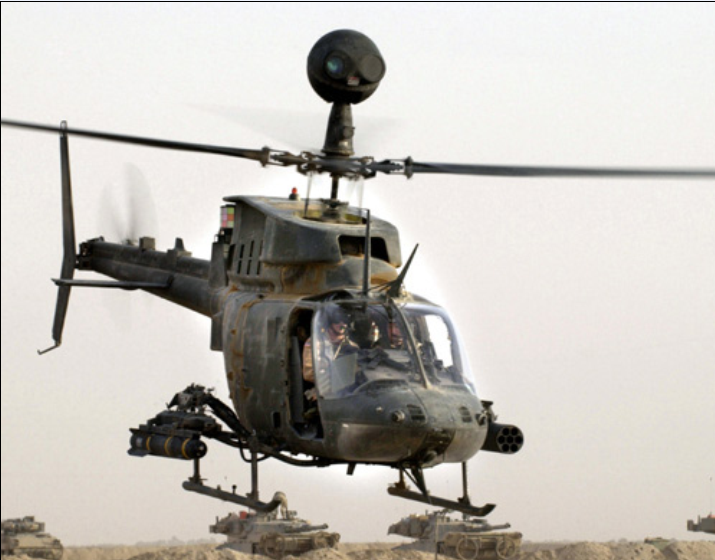
During Operation Storm in the Desert, OH-58D not only provided the actions of the Cobra and Apache drums, but also served as the "eyes" of the American tank divisions, revealing disguised firing points, defunct defense units and supporting special forces operations. Particularly useful was the ability of the "Kiowa Warrior" to operate at night and in conditions of poor visibility. So, on the night from 17 to 18 in February, a pair of OH-58D destroyed the Hellfire ATGM coastal battery of Iraqi anti-ship missiles HY-2 (Chinese version anti-ship missile P-15). On the account of armed OH-58D there are several units of Iraqi armored vehicles. Especially light reconnaissance and attack helicopters distinguished themselves during the liberation of Kuwaiti territory. In 1991, 103 OH-58D took part in the fighting against Saddam Hussein's troops, and three cars were lost.
17 December 1994 of the year during a routine patrol flight along the border between two Koreas, the crew of the OH-58D inadvertently flew 6 km into North Korean airspace and was shot down. One crew member was killed, and the other spent in the North Korean captivity 13 days.
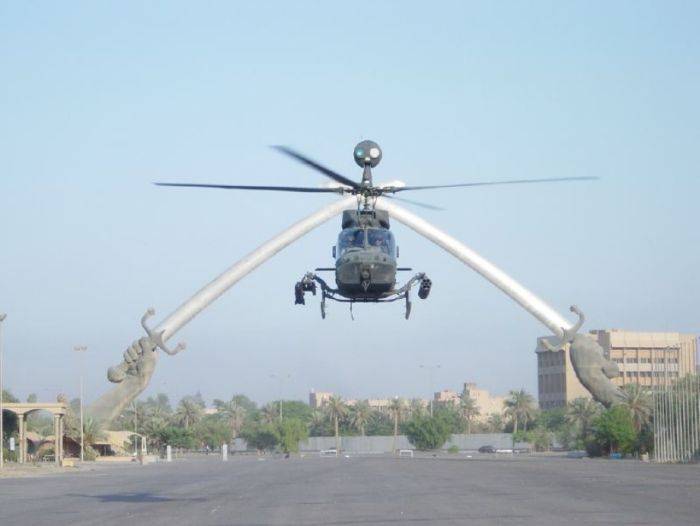
Until recently, helicopters "Kayova Warrior" were actively used in Iraq and Afghanistan. In the initial period of the Iraqi 2003 campaign, helicopters searched for enemy tanks and reconnaissance, and then participated in operations against Iraqi insurgents.
In some cases, OH-58D were used for fire support of ground units and as an air command post. The American command noted a high technical readiness factor for helicopters, which did not fall below the 0,9 value. From 2003 to 2014, 35 OH-58D is lost from enemy fire and in flight accidents.
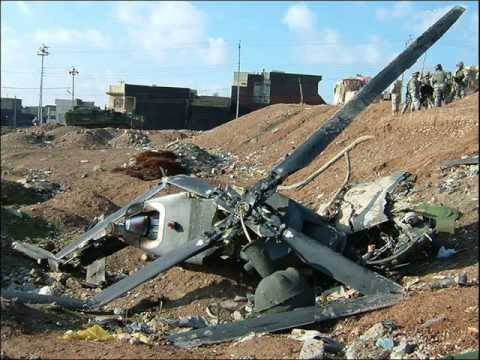
The Kiowa Warrior is currently being replaced in the war zone drones, and AH-6 Little Bird and AH-64 Apache light combat helicopters are used to provide helicopter support for special operations forces and private military campaigns.
At the time of its creation, the OH-58D Kiowa Warrior surpassed all serial reconnaissance and combat helicopters in its ability to detect targets on the battlefield and issue target designation aviation weapons and artillery. But after the advent of the AH-64D Apache Longbow with the AN / APG-78 millimeter-wave radar placed in a streamlined container above the rotor hub and the TADS electron-optical system, which includes television and infrared equipment with a 30-fold increase, the need for expensive is weak a protected helicopter did not become apparent. It was considered too expensive to maintain several helicopter squadrons in the state of the helicopter squadron, which differed in the composition of avionics, components and assemblies from the main combat helicopters. In addition, the Kiowa Warrior, inferior to Apache by flight data, often fettered the actions of a combat unit. After saturation of the AH-64D combat attack helicopter squadrons with an over-the-barrel radar and sightseeing optoelectronic systems, not inferior in their capabilities to the equipment installed on the Kaiowa Warrior, there was no longer a need for an out-of-date unarmored reconnaissance helicopter. In 2008, the gradual withdrawal of OH-58D from combat squadrons began.
But the Americans, known for their careful attitude to even the hopelessly outdated aviation technology, were not in a hurry to butt up yet fully capable helicopters for scrap. The reconnaissance drums OH-58D, which still have sufficient flight resources, were transferred to conservation in Davis-Montand. Some of the disarmed vehicles were sold to civilians, and they were also acquired by law enforcement and environmental agencies.
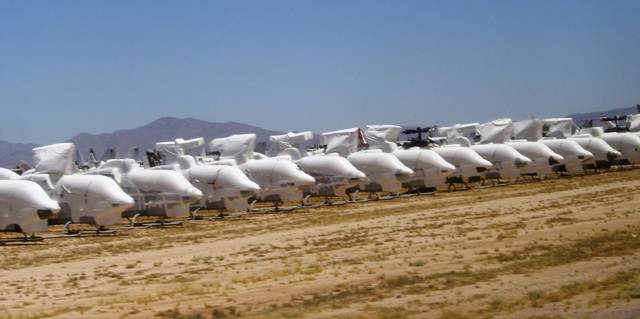
Until now, about two hundred OH-58s are stored in the Bone Cemetery in Arizona. After the refusal of the command of the US Army Aviation from helicopters "Kiowa Warrior" used machines were delivered to Turkey, Saudi Arabia, Tunisia, Croatia and Greece. Some countries received armed OH-58D as part of free military assistance. However, it is worth noting that export deliveries began only after 30 years that have passed since the introduction of the OH-58D into service, and already after the helicopter was put out of service in the US Army.
However on this story improvement of the helicopter "Kayova" is not over. In 2012, Bell Helicopter began testing the new OH-58F reconnaissance-impact modification. On this model, an advanced optoelectronic surveillance system is located in the nose of the helicopter.
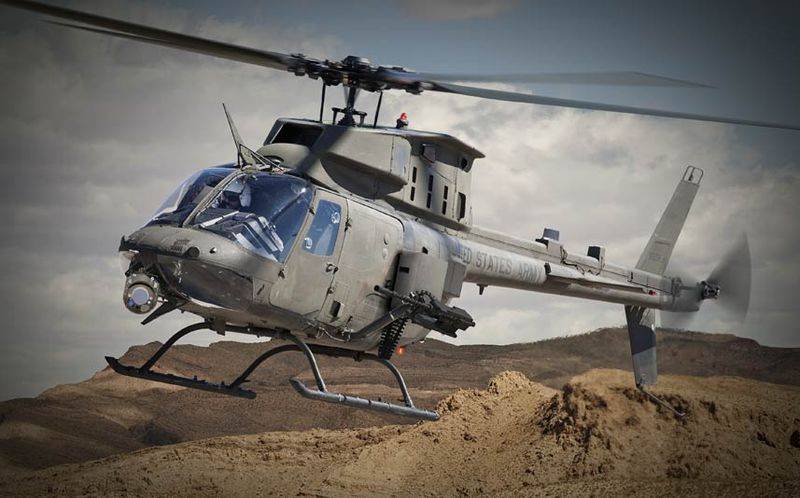
At the disposal of the operator and the pilot appeared two multifunctional liquid crystal panels. Thanks to the refined aerodynamics and the reduction in 10% of the mass of the empty machine, it was possible to improve the flight data and increase the security of the cockpit and power plant. An even more advanced version of the OH-58F Block II was a modern, economical Honeywell HTS900 engine with an 1000 horsepower, a new transmission and tail rotor for the civil Bell 427. The helicopter installed control equipment for unmanned aerial vehicles, which was supposed to increase the intelligence capabilities of the modernized Kayovy.
The first serial helicopter was handed over to the military at the end of the 2013 of the year. In total, this modification was supposed to retrofit OH-320D 58 helicopters. However, due to budget constraints, the modernization program was curtailed and only a few OH-58F were built. Most likely, the converted machines were in the helicopter units of special operations forces.
Not implemented project remained OH-58F / AVX with coaxial bearing screws and two additional horizontal screws in the ring fairing. The calculations showed that 2 / 3 of existing OH-58D could be converted into this variant. At the same time, it was proposed to seriously save money by using the fuselage and some units and assemblies of mass-produced cars. The service life of the converted helicopters should have been another 20-25 years.
After switching to the coaxial scheme, the specific fuel consumption was planned to be reduced by 30%, and the speed and range of the flight should have increased by 20%. At the same time, avionics and armament should have been borrowed from the modification OH-58F Block II. But due to budgetary constraints, the military chose to spend money on the purchase of unmanned aerial vehicles, rather than on upgrading old helicopters.
Bell light helicopters are in steady demand in the international market. Foreign customers were offered percussion machines based on civilian helicopters. In parallel with the construction of the military OH-58А Kiowa, Bell Helicopter Textron created the Bell 206 JetRanger for the civilian market, which was distinguished by an elongated fuselage, a more powerful engine and a large rotor diameter.
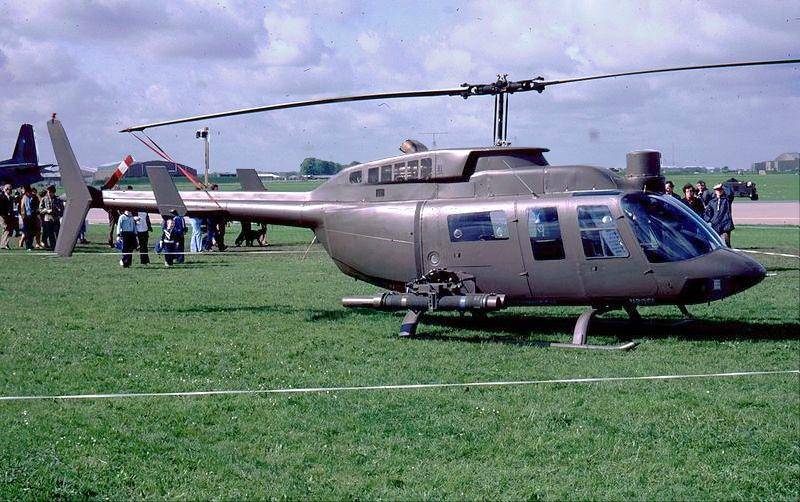
The upgraded version of the Bell 206L with a M65 gyro-stabilized sight mounted above the cab and the TOW ATGM was adopted in several countries. In general, the "Jet Wangler" was much more common than the "Kiowa." Due to the greater carrying capacity and elongated fuselage, the Bell 206L was more suitable for use as a transport and combat helicopter, which was especially appreciated in the Third World countries. In some countries, the American Bell 206L armed with an ATGM NOT. For example, such helicopters belonging to Saudi Arabia participated in combat operations during the operation “Desert Storm”.
A further development of the Bell 206 helicopter was the Bell 407, which first flew into the air in the 1995 year. This machine uses a four-blade main rotor designed for the OH-58D Kiowa Warrior. Allison 250-C47B turboshaft engine with 813 horsepower able to accelerate a car weighing 2700 kg to 260 km / h. The helicopter is able to carry cargo weighing up to 1060 kg. When placed on the external units of a combat load with a mass of 227 kg, the radius of action is 320 km.
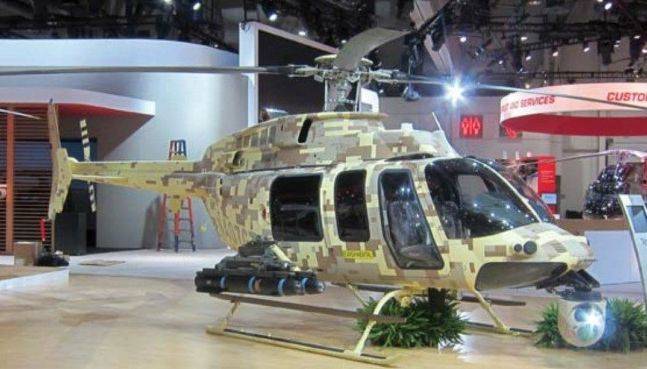
The armed version received the designation Bell 407GT. This machine is equipped with surveillance and sight equipment, in many respects similar to that used on the OH-58F helicopter and a similar composition of weapons. Bell 407GT helicopters were shipped to El Salvador, Mexico, UAE and Iraq.
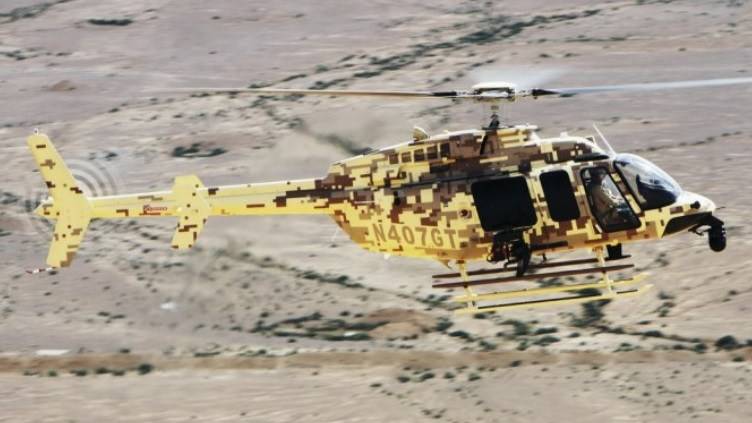
By April, Iraqi Air Force 2013, received 27 Bell 407GT attack helicopters, which were actively used in battles with the Islamists. October 8 2014, one helicopter was hit by a MANPADS missile, and both pilots were killed.
Even during the Vietnamese epic, the US military command came to the conclusion that the AN-1 Cobra is far from the ideal of a helicopter gunship and can only be considered as a temporary measure. According to the characteristics of survivability, flight speed and combat load, the “Cobra”, created largely on the basis of the transport and combat UH-1 Iroquois, did not suit the military. Soon after the end of the Vietnam War, the AAN (Advanced Attack Helicopter - Russian Competition) was announced. A promising combat helicopter. Unlike the AN-1 Cobra helicopter, which was originally intended to fight partisans in the jungle of Southeast Asia, the main purpose of the promising vehicle was to fight Soviet tanks on European theater, including in adverse weather conditions and at night. In the technical assignment for the design of a two-engine perspective anti-tank helicopter, it was indicated that he would have to operate in conditions of strong air defense and from field airfields, which in turn meant autonomy of application and ability to self-deploy. In terms of security, speed, maneuverability and range of the flight, the new combat helicopter had to surpass all existing machines of a similar purpose. As the main weapons assumed 16 ATGM BGM-71 TOW and 30-mm gun. Later in the specification of missile weapons made changes, the main caliber were to be sixteen laser-guided AGM-114 Hellfire. As part of the requirements for combat survivability, it was stated that the helicopter must be immune to single hits of 12,7-mm caliber armor-piercing bullets from a distance of 450 m and have minimal vulnerability when an 23-mm high-explosive fragmentation shell was hit. After these munitions hit any part of the helicopter, with the exception of the tail rotor elements, it should have been possible to continue flying for 30 minutes.
By 1976, the two main contenders for winning the competition were determined. These were YAH-64 from Hughes Helicopters and Bell YAH-63. When designing the YAH-63, Bell was largely based on the experience gained in creating the AN-1 Cobra. But unlike the Cobra, the new helicopter was from the very beginning two motorized. General Electric YT700-GE-700 Turbos, with takeoff 1680 horsepower each, in a horizontal flight, the helicopter was dispersed to 322 km / h. A helicopter with a maximum take-off weight of 8700 kg could fly 570 km. Unlike the Cobra, the experienced YAH-63 was equipped with a three-wheeled chassis with hydraulic shock absorbers capable of ensuring the safety of the crew at a speed of meeting with the ground up to 12,8 m / s.
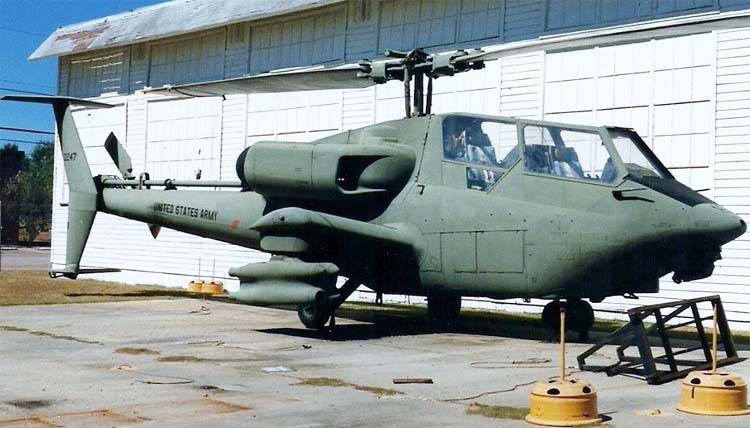
However, the helicopter offered by Hughes was declared the winner at the end of 1976. The choice of the military was partly influenced by the accident that occurred with YAH-63 during the comparative tests. In addition, the security level of YAH-64 was initially higher and was equipped with a more robust four-blade rotor. Compared to Bell's helicopter, the prototype built by Hughes had better maneuverability from the ground. Moreover, despite the completely new design, YAH-64 promised to be less expensive in production and operation.
After winning the competition, two more years were spent on revision of weapons and avionics. To reduce the IR-visibility on the exhaust nozzles mounted heat dissipation nozzles. Changes made to the glazing of the cabin and the tail section. On the second flight prototype, a new aim-navigation system TADS / PNVS, developed by Martin-Marietta, was installed. The TADS equipment includes a telescopic sight, a high-resolution television camera, a laser range finder, a designator, and a heat finder. Optical sight and daytime television camera are used in conditions of good visibility. The imager is designed to work at night and in with poor visibility. PNVS equipment is intended for piloting at night and in adverse weather conditions. A more reliable T700-GE-701 hp 1696 HP engine was installed on the reference pre-production sample. Much attention was paid to improving the level of survivability and resistance to combat damage. In case of failure or combat damage to one engine, the second automatically switches to emergency mode of operation. The transmission remains operational for 30 minutes after a complete oil leak. The cockpit of the crew confidently holds hits 12,7-mm bullets, and the rotor blades are designed for lumbago 23-mm armor-piercing projectiles. Between the workplaces of the crew, a kevlar partition is installed. The operator of the armament has the necessary instruments and controls for the independent execution of the flight and landing upon the failure of the crew commander. With a mass of empty helicopter 5165 kg, the weight of the protection elements is 1100 kg.
After making improvements and confirming the stated characteristics, in December 1981 of the year it was decided to serially build the AN-64A Apache helicopter. Especially for this in the city of Mesa, in Arizona built an assembly plant. Soon the McDonnell Douglas Corporation became the owner of the helicopter production of Hughes Helicopters. In 1997, McDonnell Douglas, in turn, was absorbed by the Boeing Company. After that, assembly production in Arizona was conducted under the auspices of "Boeing". Although at the moment the new “Apaches” are no longer being built here, the modernization of the early versions is still ongoing.
Satellite image of Google Earth: AN-64 Apache helicopters parked near the Boeing assembly hall in the city of Mesa
By 1982, the characteristics of the helicopter attack aircraft were determined. The helicopter with a maximum take-off weight 10430 kg and the total power of the 3392 powerplant hp Accelerated in horizontal flight to 293 km / h. Cruising speed - 265 km / h, on a dive - no more than 365 km / h. Fighting radius - more than 400 km. With four outboard tanks, the fermentation range is 1750 km, which allows you to quickly transfer helicopters under your own power. Combat load - 770 kg. In the standard version of weapons "Apache" carries two blocks of 19 70-mm NAR and eight ATGM.
The main anti-tank weapons are up to 16 ATGM AGM-114 Hellfire, placed on four suspension nodes. The destruction of lightly armored targets, vehicles and manpower is possible with the help of a mobile 30-mm M230 cannon with ammunition to 1200 projectiles capable of firing in the ± 110 ° sector horizontally and + 11 ° ... -60 ° vertically. The electrically driven M230 gun fires 340-350 g projectiles leaving the barrel at an initial speed of up to 850 m / s. Rate of fire 600-650 rds / min. Mass of gun without turret and ammunition - 57,5 kg. Effective range of ground targets 3 000 m.
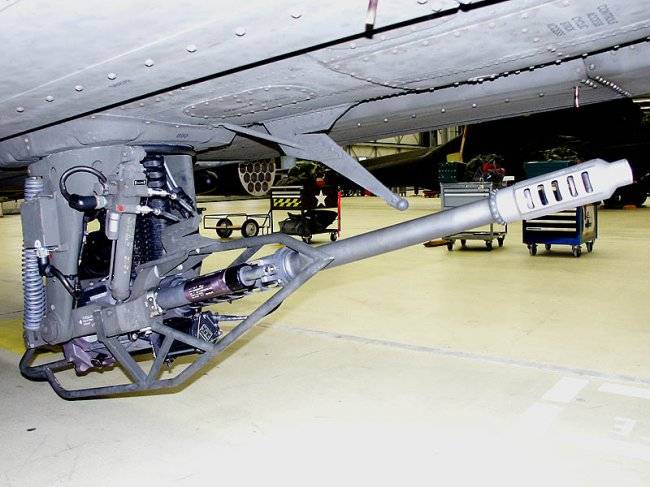
For firing guns M230 used cumulative fragmentation shells M789 with armor penetration 40 mm (according to other sources up to 50 mm) when hit at a right angle.
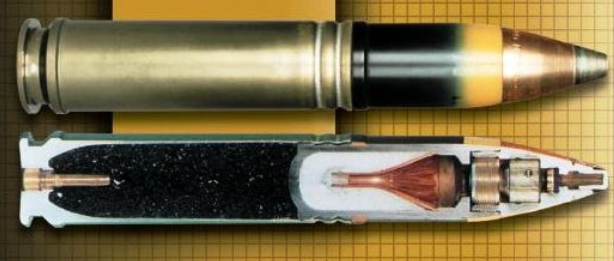
Experts in the field of aviation weapons say that this is a very good indicator for a small-sized rotating projectile, which contains 27 grams of explosive. As is well known, in small-sized munitions it is not easy to achieve a stable formation of a cumulative jet, which, due to the rotation of the projectile, is also prone to “splashing”. For shooting in manpower and unarmoured vehicles, high explosive fragmentation projectiles M799 containing 43 grams of explosive can be used. When the M799 projectile is broken, a zone of continuous destruction by shrapnels with a radius of 2 m is formed. According to the Apache pilots who participated in the hostilities, it is quite possible to make a direct hit on a person from a distance of a kilometer from a cannon.
Also in the armament may include 70-mm missiles Hydra 70, CRV7 and APKWS. The APKWS guided missile was created by BAE Systems based on the NAR Hydra 70. It is equipped with a laser GPS and has high accuracy. A missile with a cumulative fragmentation warhead weighing 4 kg can be used to combat armored vehicles and is a much more budgetary option than the Hellfire ATGM. The cost of APKWS is about $ 30 thousand. At a distance of 5000 m over 50% of missiles are stacked in a circle with a diameter of 1 m. APKWS missiles are launched from standard blocks for 70-mm HAP Hydra 70.
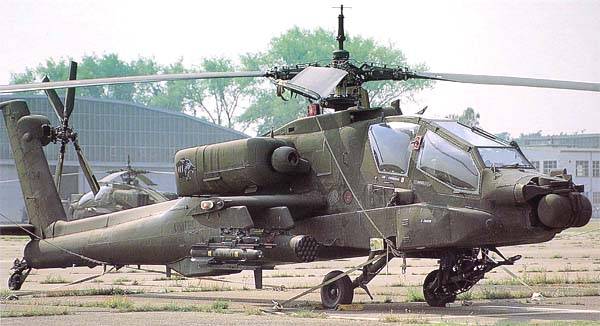
In the first half of 1984, the first serial Apaches entered the 7 th helicopter battalion of the 17 th armored cavalry brigade and the 6 th airmobile brigade deployed in Fort Hood. In 1989, AH-64А was run-in against the Panamanian paramilitary units, who remained loyal to Manuel Norieg. Since the enemy did not have tanks, expensive laser-guided Hellfire anti-tank guided missiles were used against wheeled vehicles, for destroying roadblocks and during strikes on the barracks. At the same time, the Apaches, operating at night, succeeded in paralyzing the transfer of reinforcements and destroying the defense units of Panamanians with pinpoint strikes.
In January 1991, the Apaches were among the first to fight in Iraq. The strike group of eight 17 helicopters in January secretly entered the south-western part of Iraq, where the radar of the air review was located. From the 6 km distance, the radars themselves, communications centers and diesel generators were destroyed. After the start of the active phase, operations AH-64А organized a hunt for Iraqi armored vehicles and PRP launchers. In this role, the Apaches, equipped with TADS / PNVS equipment, acting at night and in conditions of poor visibility, showed themselves better than the Cobras. However, it was noted that the effectiveness of night sighting and viewing systems was not as high as it was advertised. At the same time, the Hellfire supersonic anti-tank guided missile systems, which have a greater launch range than the Tou missiles, have proven themselves well, confidently hitting the Iraqi T-72A. Already during the sorties it became clear that the launch of the Hellfire should be carried out a little to one side. When launching, the rocket should not pass in front of the lens of the infrared camera, otherwise its torch will give such an illumination that the operator will inevitably lose the target. The goal can be changed four seconds before the hit "Hellfire" - GOS rocket manages to reopen.
In total, 200 AH-64А was sent to the combat zone, the losses were three cars. The anti-aircraft resistance was not as strong as the Americans had expected. The most up-to-date anti-aircraft complexes available in Iraq were removed from the front line to protect staffs, air bases and major cities.
Soon after the transfer of the AH-64A to the American bases in Europe, training and simulation of combat situations began, which took into account the opposition of the Soviet military air defense complexes existing at that time. Analysis of the capabilities of the Apache first serial modification showed that the combat effectiveness of the AH-64А will be slightly higher than that of the upgraded AH-1F, and the losses can be very significant.
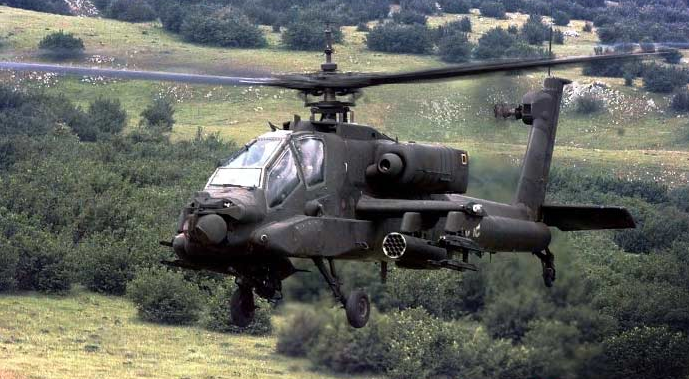
For action in Europe have developed a special tactic. External target designation was to come from land-based advanced aircraft navigators or from OH-58D reconnaissance aircraft Kiowa Warrior. At the same time, the Apaches reached the line of attack at a high speed and minimum flight altitude. After a short-term “slide”, after launching a rocket, the combat helicopter again decreased and made a withdrawal. The use of such a combat reception should have significantly reduced the time spent combat helicopters in the zone of destruction of military air defense weapons. However, low-altitude flights over densely populated terrain were fraught with a collision with power lines. To protect against this danger, special knives-dividers were mounted on helicopters. But the external illumination of the target during the attack was not always possible. In a combat situation, there is a real possibility that attack helicopters will have to operate autonomously in the depth of the enemy defense. In this case, the search for targets and missile guidance will have to independently. There were some difficulties. Even if the helicopter managed to go unnoticed at the launch line of an anti-tank missile, the crew needed some time to detect and identify the target. After the launch of the guided missile, the operator is forced to highlight the target with a laser beam, and the helicopter is strongly constrained in maneuver. At this point, the carrier ATGM is very vulnerable to anti-aircraft fire. One of the ways to reduce the vulnerability of an antitank helicopter is to equip it with a small radar and use anti-tank guided missiles with a semi-active radar homing head. Having found the enemy’s armored vehicles using radar and taking the chosen targets to support, in the case of an anti-tank missile with a radar seeker, the guidance operator has the ability to fire at several different targets. In this case, the helicopter is not so constrained in maneuver, as in the case of the use of missiles with laser, radio command or wire guidance. Equipping a combat helicopter with a circular radar allows not only to increase the surveillance and reconnaissance capabilities, but also reduces the time spent in the affected area of air defense systems. At the same time, the information awareness of the crew about the air situation is increasing. This, in turn, when detecting enemy fighters, allows for timely evasion maneuvers and a favorable position for defensive air combat. The flight-technical characteristics of the Apache helicopter, if equipped with air combat missiles, make it quite a formidable opponent in air combat. However, the capabilities of the Hellfire missiles also allow them to be used against low-altitude subsonic targets, which was repeatedly confirmed during test launches. It was recognized as rational to ensure the exchange of information between the attack group helicopters, which made it possible to optimally coordinate actions and rationally distribute the detected targets.
Shortly after the start of mass production of AH-64A, the question arose of upgrading the helicopter. By introducing a new fire control system, modern means of communication and navigation, increasing security, increasing the power of the power plant and using new modifications of the Hellfire ATGM on the AH-64В model, it was intended to significantly increase the combat effectiveness. However, after analyzing possible options, the AH-64В program was turned in favor of a helicopter equipped with a millimeter-range nadvtulochnaya radar.
15 April 1992, the AH-64D took off. To compensate for the increased take-off weight, two General Electric T700-701C engines with an 1 890 liter capacity were installed on the helicopter. with.
Testing of the six prototypes continued until April of the 1995 year. According to the test results, it was recognized that the combat effectiveness of the AH-64D increased by 64 times as compared with the AH-4А. According to a five-year contract, the US Department of Defense allocated $ 1,9 billion to upgrade 232 AH-64A to AH-64D. Simultaneously with the modernization, new helicopters were being built. To date, more than 2000 "Apache" of all modifications. The cost of the AH-64D program as of 2007 for the year was $ 11 billion. Deliveries of the serial AH-64D Apache Longbow to the troops began in the 1997 year.
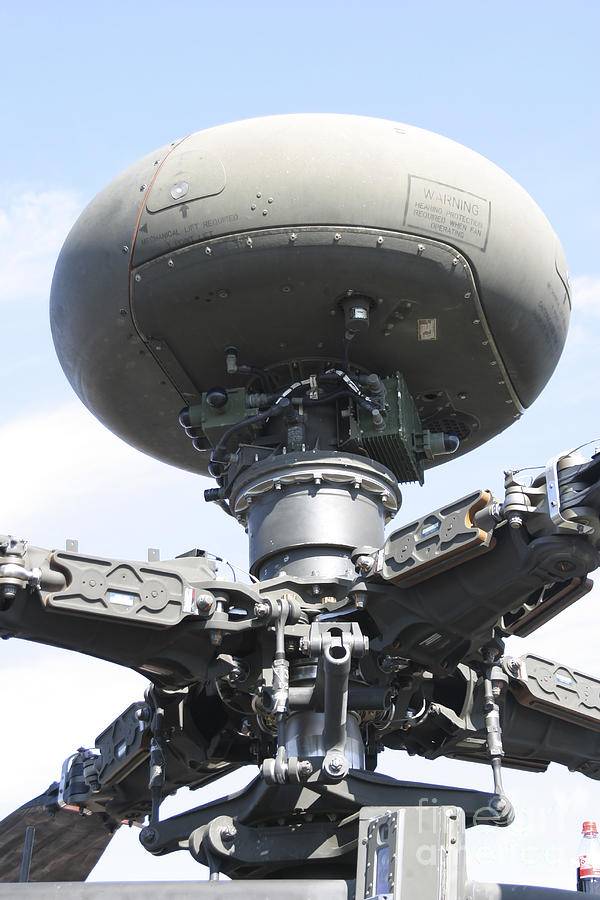
The most notable external feature of the AH-64D is the millimeter-range AN / APG-78 Longbow radar antenna of the AN-APG-128 Longbow and the larger compartments of radio-electronic equipment on both sides of the fuselage bottom. The radar associated with the weapons control system, according to American data, is able to track to 16 targets and attack up to 30 simultaneously. Missiles can be launched through 52 seconds after a target is detected. Data on the detection range of a tank-type target in various sources is controversial. According to the information provided on the website of the manufacturer Northrop Grumman, in automatic mode, the radar is able to monitor the situation over an area of more than 78 km² in the direction of flight. The AAWWS Longbow combat all-weather aviation system makes it possible to use ATGMs with radar seeker in difficult meteorological conditions, since the AN / APG-78 radar, unlike optical weapons guidance systems, including laser, can successfully operate in fog and rain conditions. The radar in the circular view mode can work both on ground and on air targets, carry out mapping of the terrain and control the flight at extremely low altitude. However, due to the high cost of the AN / APG-XNUMX radar, not all modernized Apaches are equipped with them. Helicopters equipped with radar during a joint combat departure, through the data exchange equipment, should give target designation to the Apache, on which there is no radar.
Regardless of the presence or absence of the AN / APG-78 radar, most of the on-board electronics were updated on the AH-64D. Based on the experience of aviation in the course of the Iraqi company 1991, all the upgraded and new machines were installed by the interrogators of the “friend-to-foe” system, which should exclude the targeting of their troops. The structure of avionics AH-64D includes: an advanced GPS satellite navigation system, a digital closed multi-channel communication system, an on-board computer of increased productivity with software standardized in the framework of the armed forces and interfaced with any control system. PNVS night vision equipment has been replaced by a more advanced FLIR. The following systems are intended to counter enemy air defense systems: a radar receiver AN / APX-123, a system of sensors warning of exposure to an LWS laser, a station of jamming AN / ALQ-211 and AN / ALQ-136. Not forgotten, and traditional protective measures: heat traps and dipole reflectors.
After the construction of the AH-64D modification began, the helicopter's onboard equipment was repeatedly improved. In particular, the resolution of the AN / APG-64 radar was significantly increased on AH-78D Block II helicopters. According to American data, at a distance of 10 km there is the possibility of confident identification of the target. Now you can not just detect the enemy’s armored vehicles and send missiles at her, as well as distinguish the tracked armored personnel carrier from the tank without its visual recognition. Thus, when attacking targets on the battlefield or during movement in a convoy, you can choose priority ones. This was achieved by reducing the width of the beam and increasing the energy potential. That, in turn, increased the radar's ability to accurately recognize targets and its noise immunity, which is especially important when firing radar-guided missiles.
In 2003, AH-64D was involved in Operation Iraqi Freedom. In the first hours of the operation, which began on March 20, the Apaches attacked AGM-114L radar-guided anti-tank guided missiles and laser-guided AGM-114K laser-guided missiles at Iraqi armored vehicles and fortifications on the border with Kuwait. This time, the Iraqis partly took into account the lessons of “Storm in the Desert”. Virtually all Iraqi tanks were well disguised and used as fixed firing points. It was very difficult to detect and hit the disguised armored vehicles in caponier and covered with sandbags. In some cases, even the nadutilny radar did not help, and the helicopters returned with unused ammunition. Defense units, as a rule, were well covered by anti-aircraft artillery and MANPADS. March 24 was one of the most unsuccessful combat raids with the participation of "Apache". On that day, 34 AH-64D from the 11 Aviation Regiment attempted to strike at the positions of the Medina Division of the Republican Guard between the cities of Hill and Karbala. Although during the sortie we managed to destroy several T-55 and T-72 tanks, as well as cover the NAR positions of artillery, due to the strong anti-aircraft resistance and the losses incurred, the raid can be considered a failure. Most of the goals were not hit. During the operation, the combat damage received 31 helicopter. Moreover, 20 machines required long-term repairs.
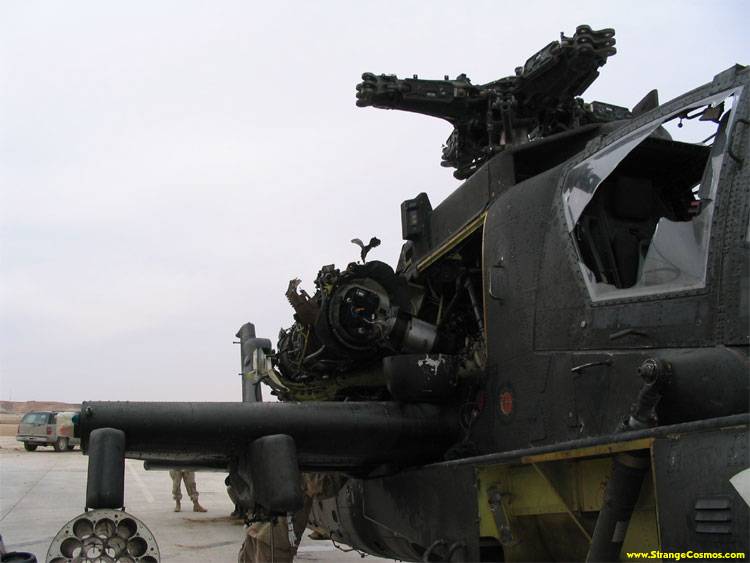
One "Apache" got hit by RPG-7 grenades in the engine (it is possible that there was a MANPADS), but managed to reach the border with Kuwait, where he sat down on the forced one. Another helicopter from the 1 th battalion of the 227 th aviation regiment of the United States Army landed in the Iraqi forces station near the city of Karbala.
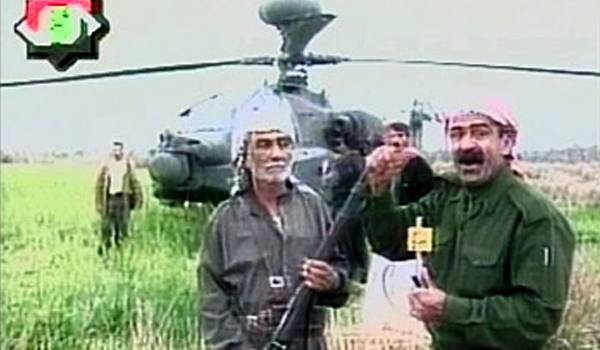
In the Iraqi television report, it was said that this helicopter was able to shoot Fedayn Ali Obeid Mengash out of an old rifle. Subsequently, the Americans made quite a few efforts to destroy the AH-64D, which fell into the hands of the Iraqis.
After the failed 24 raid of March, the American command no longer planned operations with the simultaneous participation of a large number of combat helicopters. Also, the Apache crews refrained from striking deep inside the Iraqi defense. Attack helicopters mainly operated at the request of ground units in conjunction with the A-10A attack aircraft. However, carefully planned deep raids carried out by small forces were carried out after the failure of March 24. At the same time, to support the operations in which the Apaches were involved, DRLO E-3С Sentry and E-8С JSTARS aircraft were attracted, as well as jammers of EA-6В Prowler.
In total, according to official data, until the end of the Iraq campaign from the enemy’s fire, a half dozen Apache were lost. However, combat losses continued several years after the victory over Saddam Hussein’s army. In 2006, the AH-64D was shot down after hitting a MANPADS during a patrol flight. In 2007, four combat helicopters were critically damaged during shelling of a US airbase in Iraq from mortars. In October 2014, the Apaches returned to Iraq to assist the Iraqi army in the fight against the Islamists. They were mainly used at night, when militants carried out the transfer of reinforcements and supplies. Especially the Apaches distinguished themselves in providing air support to the northeast of Fallujah and near Mosul. It is reported that the account AH-64D has several destroyed tanks and infantry fighting vehicles.
After entering the US contingent in Afghanistan as part of Operation Enduring Freedom, attack helicopters were used against the Taliban. The scale of the hostilities in Afghanistan was significantly less than in Iraq, but sometimes they were very fierce. A striking example of this is the operation "Anaconda", conducted in the first days of March 2002 (more details here: Operation Anaconda).
During the operation, due to miscalculations of the reconnaissance and underestimation of the enemy, the American military personnel from the 101 airborne and 10 mountain divisions found themselves in a difficult situation. The forces of the landing force that landed on the platforms, considered to be free from the enemy, were rescued from the complete destruction of the forces only by aviation. The five AN-64A helicopters of the 101-th aviation battalion of the 159-th aviation brigade provided substantial assistance to the paratroopers and mountain riflemen. At that time, there were only seven “Apaches” in the US grouping in Afghanistan. During the support of ground forces in the day 1 March, two combat helicopters suffered heavy damage. One, due to a hydraulic failure, made an emergency landing in the immediate vicinity of the combat zone, and the second managed to return to the airfield of a jump in Kandahar with a dry gearbox, having spent 26 minutes in the air after receiving many hits of 12,7-14,5-mm bullets. Injuries of varying degrees of severity were received by all five AN-64А that participated in the operation. According to the US military, 12 AN-64А and AN-64D were irretrievably lost in Afghanistan. However, officially they all died as a result of “flight accidents” caused by piloting errors or technical malfunctions. From the enemy's fire in Afghanistan, they allegedly did not lose a single AN-64.
The next production version of Apache was AH-64D Block III, in 2012 this year was renamed AH-64E Guardian for marketing reasons. The helicopter is equipped with T700-GE-701D engines rated at 2 000 l. with and new composite rotor blades with increased lift. This made it possible to develop speed in horizontal flight up to 300 km / h.
In addition to improving flight data, the advanced A / D helicopter AH-64E allows direct acquisition of reconnaissance information from the RQ-7 Shadow UAV and MQ-1C Gray Eagle as well as directing their actions. To combat modern mobile air defense systems and armored vehicles, a supersonic MDBA Brimstone-64 missile with a millimeter-wave radar range has been introduced into the AH-2E armament. In fact, this rocket is a further development of AGM-114 Hellfire, but with an increased launch range to 12 km. The possibility of hitting a ground target (pickup truck) moving at a speed of 110 km / h was demonstrated at tests.
A representative of the US military at a briefing on the development prospects of army aviation in 2012, said that initially it was planned to retool 56 AH-64D to AH-64E. Gradually, the majority of the Apaches with sufficient flight resources will be converted into the Guardian version, and in the 2019, the construction of new helicopters should begin. At the same time, AH-64E Guardian significantly surpasses the OH-58D Kiowa Warrior written off OH-2015D in its intelligence capabilities. In March 24 of the year, the first helicopter battalion was formed, which included the 64 AH-12E and 1 DPV MQ-1C Gray Eagle (modification MQ-44 Predator). In addition to conducting reconnaissance, UAVs can also carry Hellfire missiles and GBU-110 / B Viper Strike guided bombs. It is reported that the management of the drone from the board of the Apache is possible at a distance of XNUMX km.
At the start of the 2014 of the year, the 24 AH-64E of the 229 of the strike and reconnaissance battalion arrived in Afghanistan. From April to September 2014, on average, each helicopter spent hours 66 in the air every month. During the sorties, it was noted that AH-64E has a significant advantage over AN-64D in terms of the capabilities of the survey and search equipment. Due to the higher flight speed on the 37 km / h, the response time of the AH-64E was significantly less. In 2014, the first experience of RPV control from a helicopter in combat was obtained in Afghanistan. It is noted that the Taliban fighters, already familiar with the capabilities of the Apache early modifications, were unpleasantly surprised after the collision with AH-64E.
Currently, the Boeing Corporation is working on further development options for AH-64. According to information published in the media, the AH-64F modification will be equipped with two 3000 hp engines. and a pushing screw. This makes it possible to dramatically increase the maximum speed of flight and rate of climb. Thus, there is a return to the scheme proposed by the company Lockheed on the AH-56A Cheyenne 50 more years ago.
To date, the helicopters AH-64D and AH-64E on the complex combat characteristics are the most formidable anti-tank vehicles in the world. They could have been challenged by the Russian Mi-28 and Ka-52, not inferior, but in many respects superior to the Apache, according to flight data. But Russian helicopters are still seriously lagging behind their American rivals in composition and capabilities of avionics and armaments. Although airborne radars are currently installed on a part of Russian attack helicopters, there are no serial ATGMs with missiles equipped with a radar seeker capable of operating “fired and forgotten”, let alone the ability to control the UAV from our helicopter.
Like any other, the Apache military aviation complex is not devoid of a number of flaws. One of the main drawbacks can be considered a very high cost - $ 61 million for the modification of AH-64E. Given the exorbitant price, the loss of helicopters in Afghanistan and Iraq caused a wave of criticism. Experts pointed to poor security and lack of maneuverability of AN-64, that is, those qualities that are crucial for the survival of the helicopter, forced to act in conditions of active counteraction of enemy air defenses. In addition, the pilots complained about the unreliable functioning of the engine management system and overloading work with complex electronic systems. In part, some of the shortcomings of the Apache were eliminated on the latest serial modification of the AH-64E. It should also be understood that the Americans have been using the Apache for 30 for years, and this is in contrast to the Russian Mi-28H and Ka-52 a well-developed type of combat helicopter. According to The Military Balance 2017, the US Army Air Force Corps has 450 AH-64D and 146 AH-64E.
To be continued ...
Based on:
http://www.janes.com/
http://www.combatreform.org/TACTICALSTUDIESGROUP/piaseckivtdp.htm
https://web.archive.org/web/20041230000034/http://rocet.boom.ru/missile/wobb/longbow/longbow.htm
https://www.globalsecurity.org/military/systems/aircraft/systems/an-apg-78.htm
http://www.avxaircraft.com/safety-survivability/
https://thaimilitaryandasianregion.wordpress.com/2016/05/14/bell-eyes-austrian-potential-for-407gt-helo/
https://www.globalsecurity.org/military/systems/aircraft/oh-58d-avx.htm
https://www.globalsecurity.org/military/agency/army/6cav.htm
https://www.orbitalatk.com/defense-systems/armament-systems/30mm/
http://www.northropgrumman.com/Capabilities/LONGBOWFireControlRadar/Pages/default.aspx
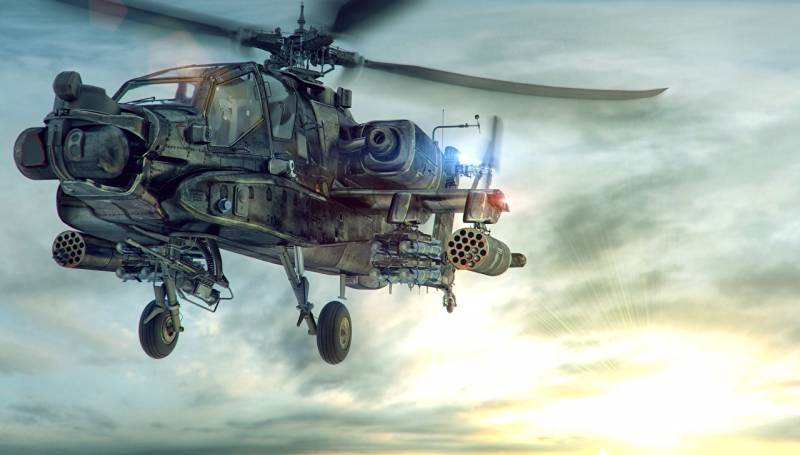
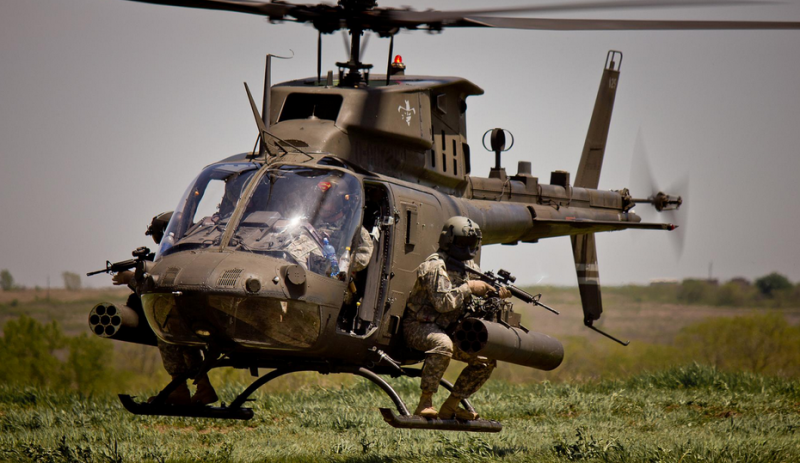
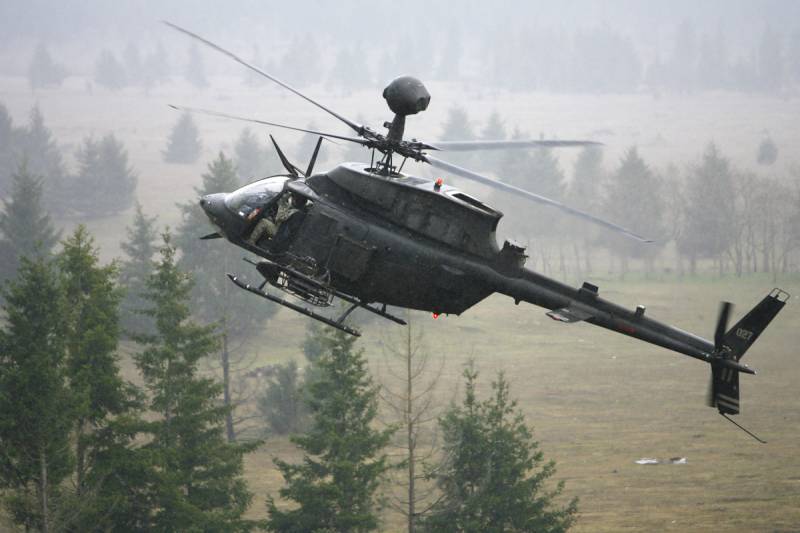
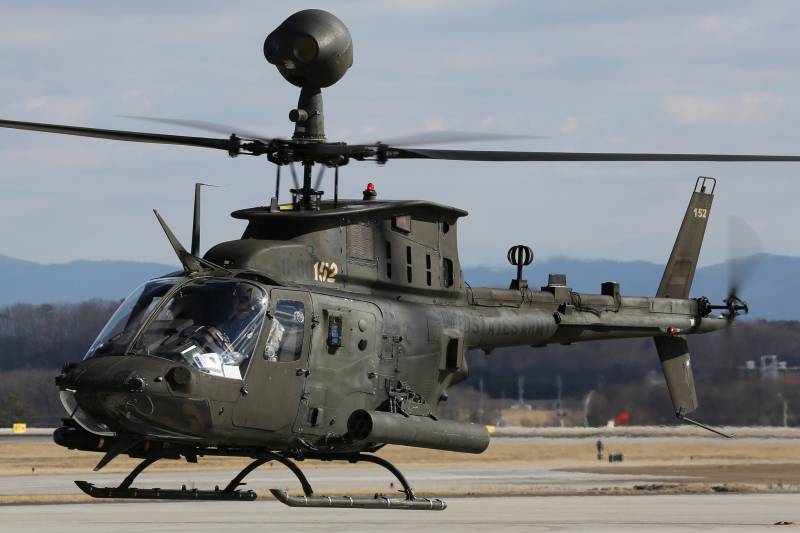
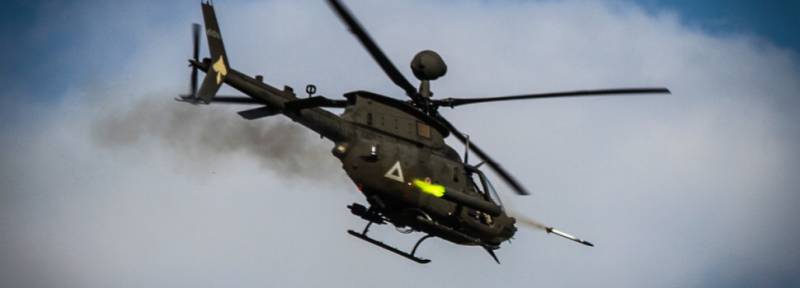
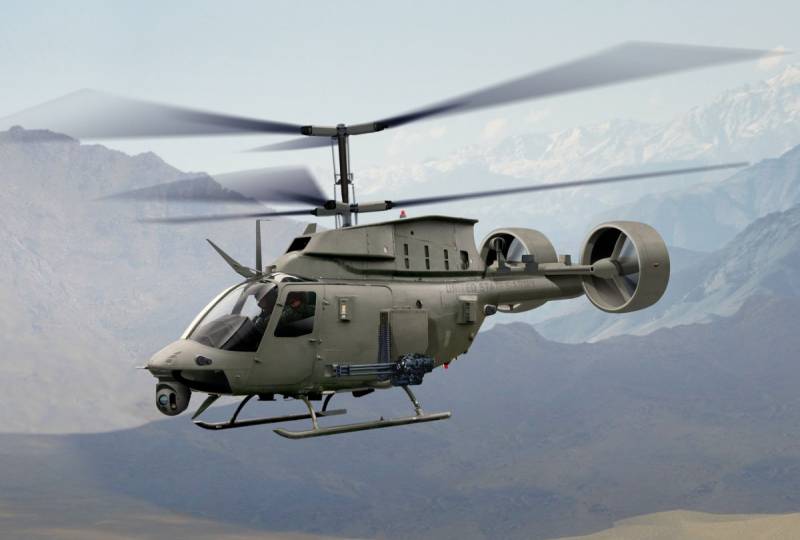
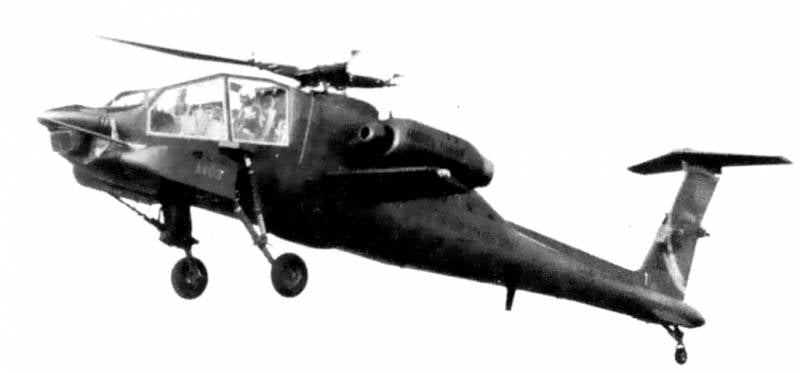
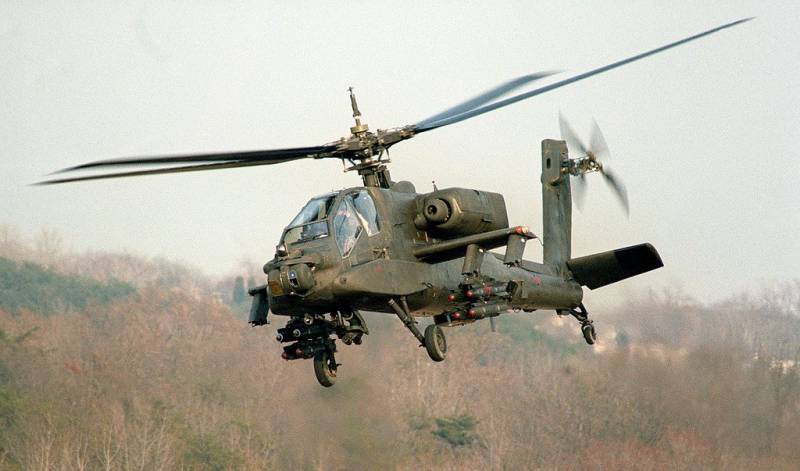
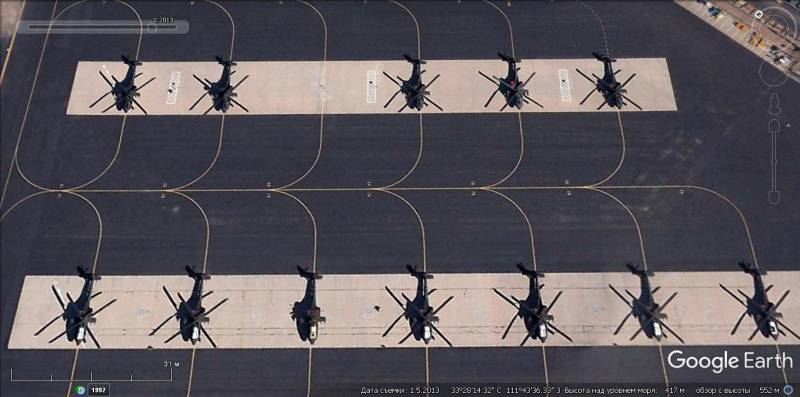
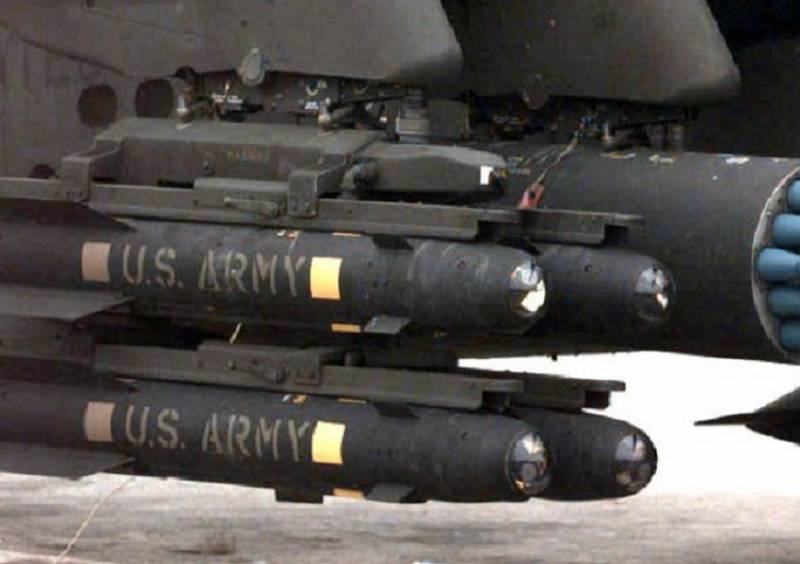
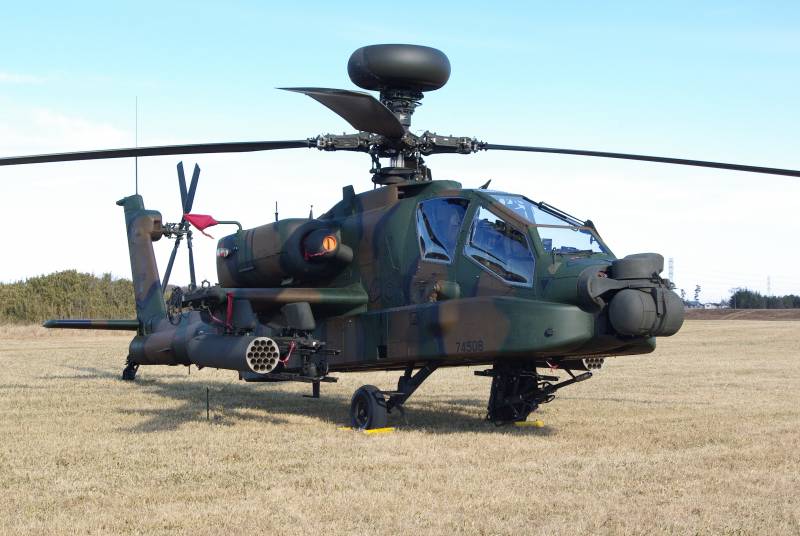
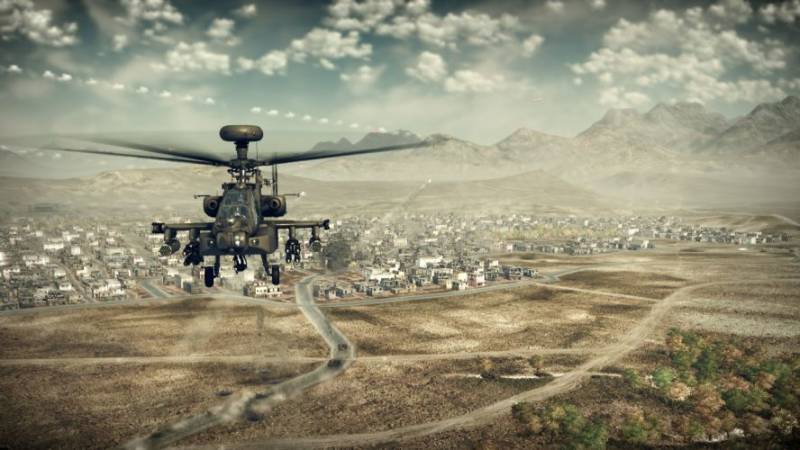
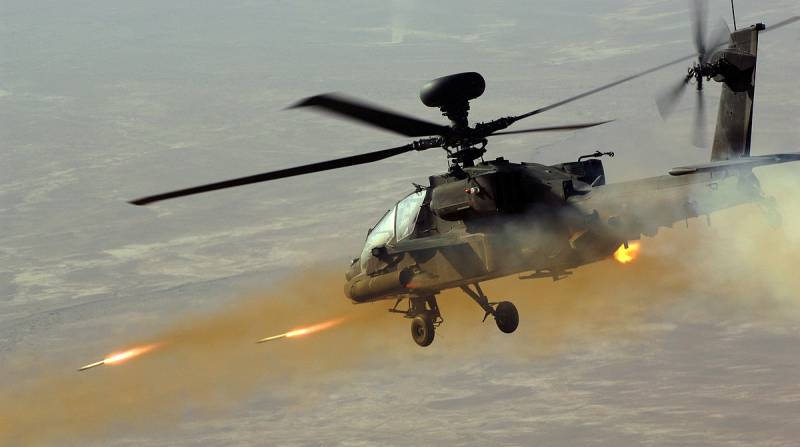
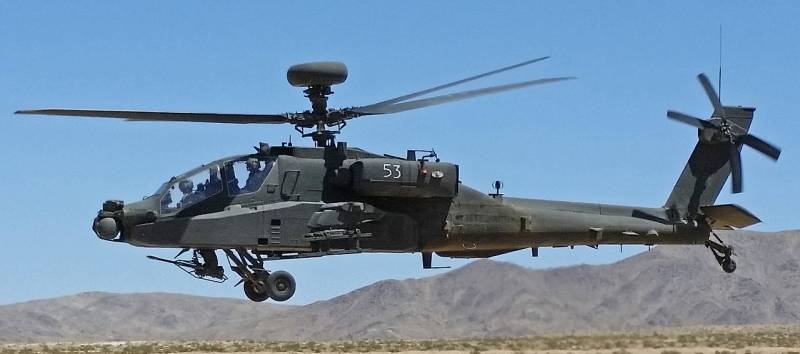
Information